
 Mr. Swapnil Bhowmick
Mr. Swapnil Bhowmick
Signs of Eating Disorders: Types and Symptoms | Medtalks
Eating Disorders
Eating disorders are a group of psychological illnesses that lead to the development of poor eating habits. They may begin with food, body weight, or body form preoccupation.If left untreated, eating disorders can have substantial health repercussions and could lead to death in severe circumstances.
Eating disorders can manifest themselves in a variety of ways. The majority, however, entails severe dietary restriction, eating binges, or purging behaviors such as vomiting or over-exercising.Although eating disorders can affect persons of any gender at any age, teens and young women are the most commonly affected. By the age of 20, up to 13% of young people may have had at least one eating issue.
What gives rise to Eating Disorders?
Eating disorders, according to experts, can be caused by a variety of factors.
Genetics is one of these. Studies involving twins who were separated at birth and adopted by different families provide some evidence that eating disorders may be hereditary. This type of research has generally revealed that if one twin develops an eating disorder, the other has a 50% chance of developing one as well, on average.
Another factor is personality traits. Neuroticism, perfectionism, and impulsivity are three personality traits that are frequently linked to an increased risk of developing an eating disorder.Other potential causes include perceived pressures to be thin, cultural preferences for thinness, and exposure to media that promotes such ideals. In fact, certain eating disorders appear to be almost nonexistent in cultures that have not been exposed to Western ideals of thinness.Having said that, culturally accepted ideals of thinness are prevalent in many parts of the world. Nonetheless, in some countries, only a small percentage of people develop an eating disorder. As a result, they are most likely the result of a combination of factors.
Experts have recently proposed that differences in brain structure and biology may also play a role in the emergence of eating disorders. Levels of the brain messengers serotonin and dopamine are said to regulate these disorders. More research is needed, however, before firm conclusions can be drawn.
Different Types of Eating Disorders
1. Obesity (Anorexia Nervosa)
The most well-known eating disorder is anorexia nervosa. It usually appears during adolescence or early adulthood and affects more women than men.People suffering from anorexia frequently perceive themselves to be overweight, even if they are dangerously underweight. They tend to constantly monitor their weight, avoid certain foods, and severely limit their calorie intake.
Anorexia nervosa is characterised by the following symptoms:
Being significantly underweight in comparison to people of similar age and height
Very restricted eating patterns
Intense fear of gaining weight or persistent behaviors to avoid gaining weight
Despite being underweight, a relentless pursuit of thinness and refusal to maintain a healthy weight.
A significant impact of body weight or perceived body shape on self-esteem with a distorted body image, including denial of being severely underweight.
Obsessive-compulsive symptoms are also common. For example, many anorexics are consumed with frequent food ideas, and others may excessively gather recipes or hoard food. Such people may also struggle to eat in public and have a strong need to control their surroundings, restricting their capacity to be spontaneous.
Anorexia is formally classified into two subtypes:
Restrictive anorexia
Binge eating or purging anorexia
Individuals with the limiting personality type lose weight only by diets, fasting, or strenuous exercise.Individuals who binge and purge may consume vast amounts of food or consume very little. In both circumstances, people purge after eating by vomiting, using laxatives or diuretics, or exercising excessively.Anorexia may be extremely harmful to the body. Individuals living with it may have bone weakening, infertility, brittle hair and nails, and other symptoms over time.
2. Bulimia Nervosa
Another well-known eating disorder is bulimia nervosa.
Bulimia, like anorexia, appears to be less frequent in males than in women and develops between adolescence and early adulthood.Bulimics commonly consume unusually enormous amounts of food in a short period of time. Each binge eating session often lasts until the person is extremely full. During a binge, the person generally feels unable to stop eating or regulate how much they consume.
Binges can occur with any type of food, although they are most typically associated with meals that the consumer would ordinarily avoid.Individuals suffering from bulimia may then attempt to purge in order to compensate for the calories ingested and alleviate gastrointestinal pain. Forcible vomiting, fasting, laxatives, diuretics, enemas, and extreme exercise are all examples of common purging habits.
Symptoms may resemble those of anorexia nervosa's binge eating or purging subtypes. Individuals suffering from bulimia, however, generally maintain a reasonably normal weight rather than becoming underweight.
The following are some of the most common bulimia nervosa symptoms:
Recurring binge eating bouts with a sense of helplessness.
Recurring bouts of improper purging to avoid weight gain.
Self-esteem that is excessively impacted by body form and weight with a dread of gaining weight while being of normal weight.
Bulimia can cause an irritated and painful throat, enlarged salivary glands, damaged tooth enamel, tooth decay, acid reflux, stomach discomfort, severe dehydration, and hormone disruptions.
Bulimia can also cause an imbalance in electrolyte levels, such as sodium, potassium, and calcium, in extreme cases. This can result in a stroke or a heart attack.
4. Pica
Pica is another eating disorder characterised by the consumption of non-food items.Pica patients have a strong need for non-food items such as ice, mud, soil, chalk, soap, paper, hair, fabric, wool, pebbles, laundry detergent, or cornstarch.Pica can affect both adults and toddlers and teenagers. Having said that, this illness is most commonly seen in youngsters, pregnant women, and those with mental problems.
Pica patients may be more prone to poisoning, infections, stomach injuries, and nutritional deficits. Pica can be lethal depending on the items consumed.However, consuming non-food items must not be a regular component of someone's culture or religion in order to be labelled pica. Furthermore, it must not be seen as a socially acceptable conduct by a person's peers.
5. Prolonged Rumination
Another newly described eating condition is rumination disorder.
It refers to a situation in which a person regurgitates previously chewed and swallowed food, re-chews it, and either re-swallows or spits it out .This rumination usually happens during the first 30 minutes after eating. Unlike medical issues such as reflux, it is entirely elective.
This condition can appear throughout childhood, adolescence, or maturity. It usually develops in newborns between the ages of 3 and 12 months and then goes away on its own. Therapy is frequently required to treat the illness in children and adults.If not treated in newborns, rumination disorder can cause weight loss and severe malnutrition, both of which can be deadly.Adults suffering from this disease may restrict their food intake, particularly in public. As a result, they may lose weight and become underweight.
6. Food Avoidance/Restriction Disorder
The term "avoidant/restrictive food intake disorder" (ARFID) refers to a new label for an ancient condition. The phrase replaces "feeding disorder of infancy and early childhood," a diagnostic traditionally reserved for children under the age of seven.Although it usually appears in infancy or early childhood, it can last until maturity. Furthermore, it affects both men and women equally.
Individuals with this illness have disordered eating habits, which can be caused by a lack of interest in eating or a dislike for specific odours, tastes, colours, textures, or temperatures.
ARFID symptoms include:
Food avoidance or restriction that prevents the person from eating enough calories or nutrients.
Eating habits that interfere with normal social functions, such as eating with others
Weight loss or poor development for age and height
Nutrient deficiencies or reliance on supplements or tube feeding.
7. Other Eating Disorders
In addition to the six eating disorders listed above, there are a number of lesser-known or less-common eating disorders. These are often classified into one of three types:
Purging disorder. Purging disorder patients frequently utilize purging activities to regulate their weight or shape, such as vomiting, laxatives, diuretics, or excessive exercise. They do not, however, binge.
Night eating disorder. Individuals with this condition regularly overeat, especially after waking up after a nap.
Other specifically identified feeding or eating problems (OSFED). While not included in the DSM-5, this category contains any other illnesses that exhibit symptoms comparable to eating disorders but do not fall into any of the categories listed above.
Orthorexia is one disease that may now come under OSFED.
Despite being cited more frequently in the media and scientific studies, orthorexia has yet to be classified as a distinct eating disorder by the current DSM.
Individuals suffering with orthorexia have an intense concentration on healthy eating.
The Bottom Line
The preceding categories are intended to offer a better understanding of the most prevalent eating disorders and to dispel misunderstandings about them.Eating disorders are mental health issues that typically necessitate therapy. They can also be harmful to one's health if not handled. They are mental illnesses characterised by a preoccupation with food or body image. They can affect anyone, although they are more common in young women
If you or someone you know has an eating issue, get treatment from a healthcare practitioner who specializes in eating disorders.

Mr. Swapnil Bhowmick
A motivated student of Medicine & Surgery (MBBS) at R. G. Kar Medical College & Hospital, Kolkata, having a knack for reading and composing medical literature. When he's not writing content for MEDtalks, Swapnil is usually looking up the latest trends and innovations in Medicine.


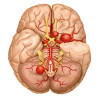
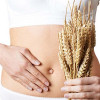
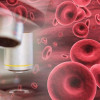
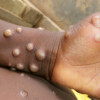
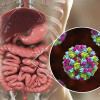






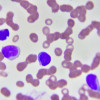


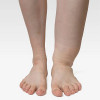
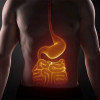


Please login to comment on this article